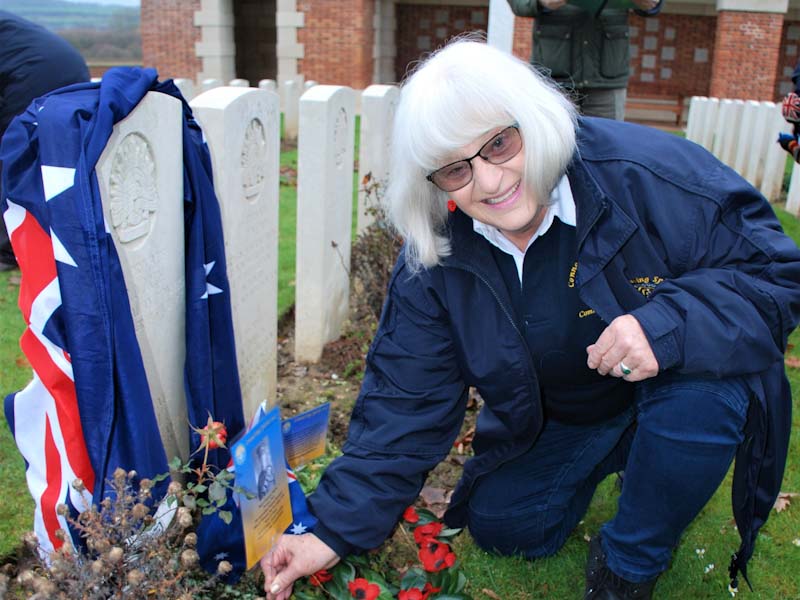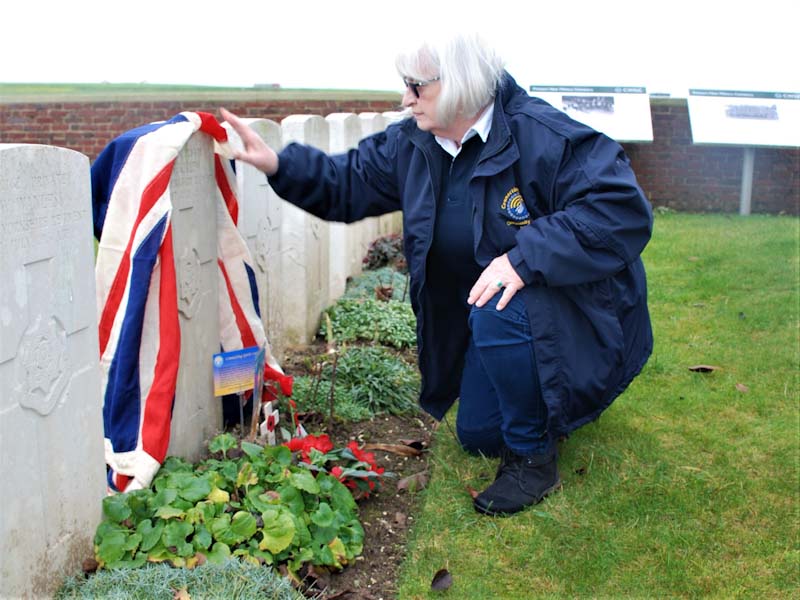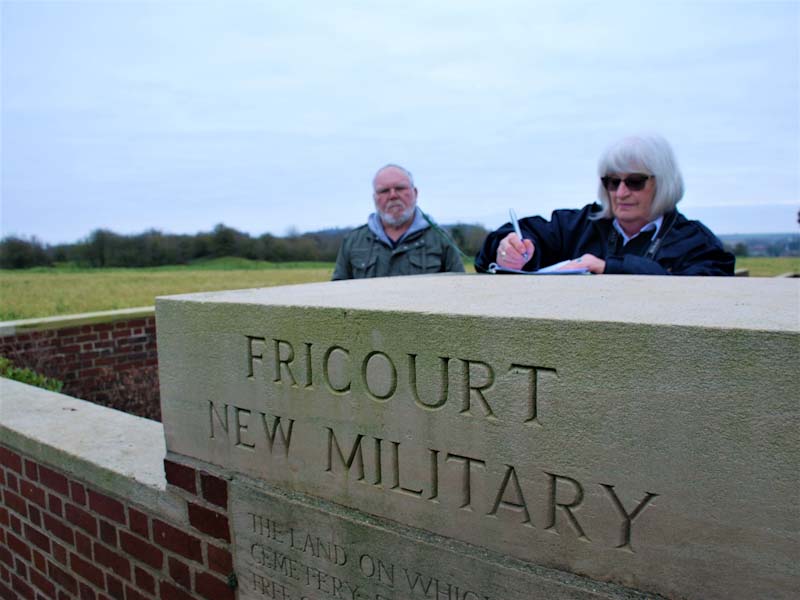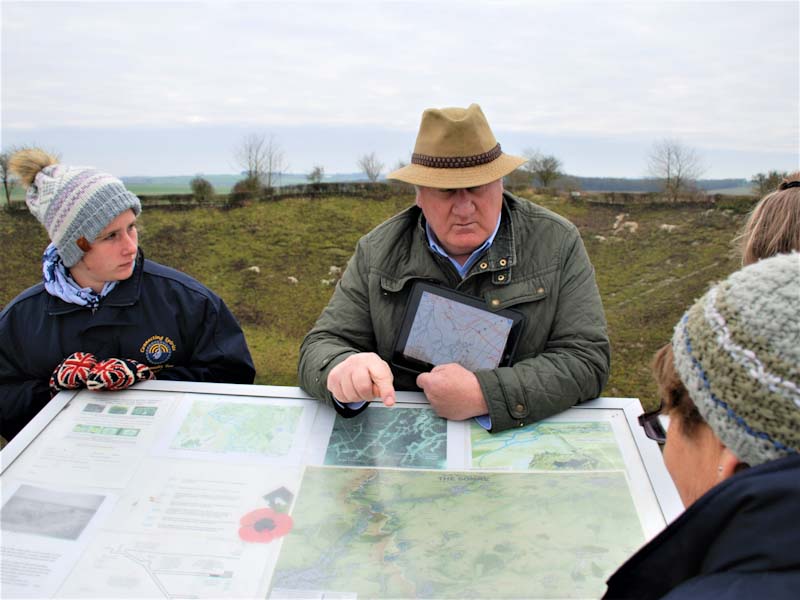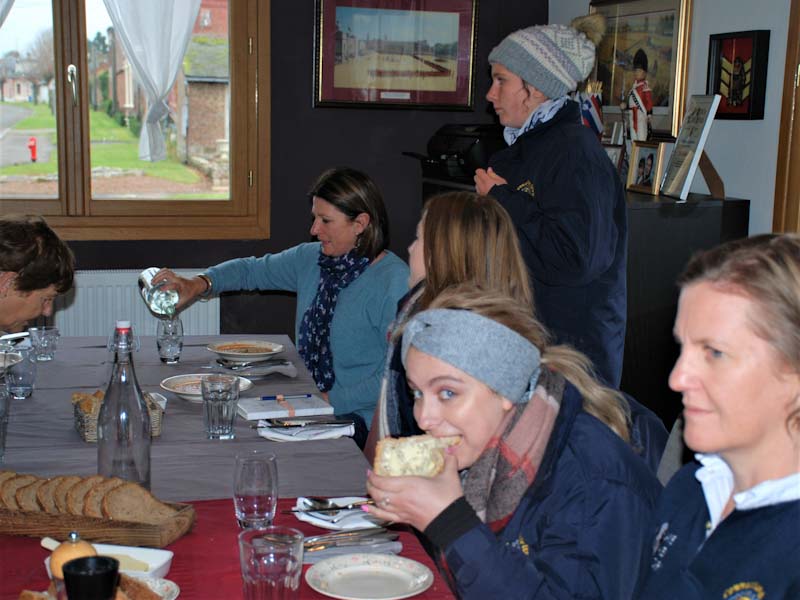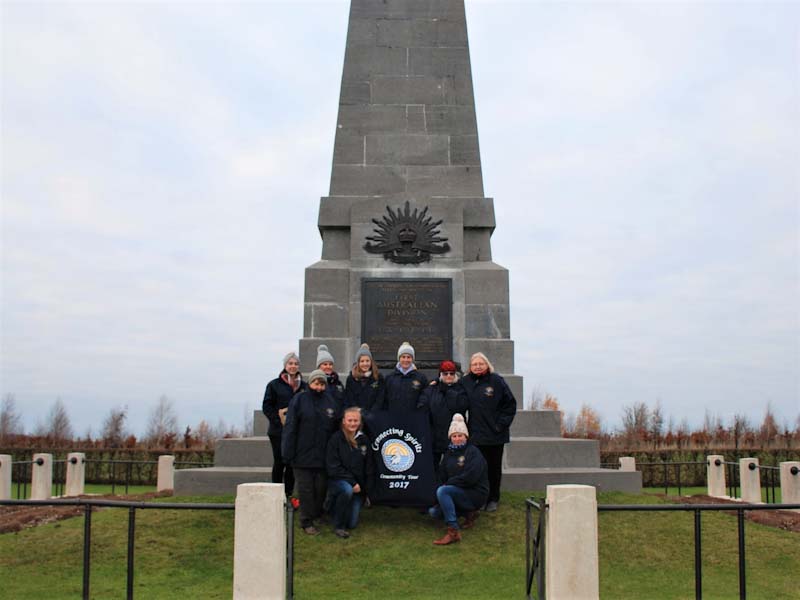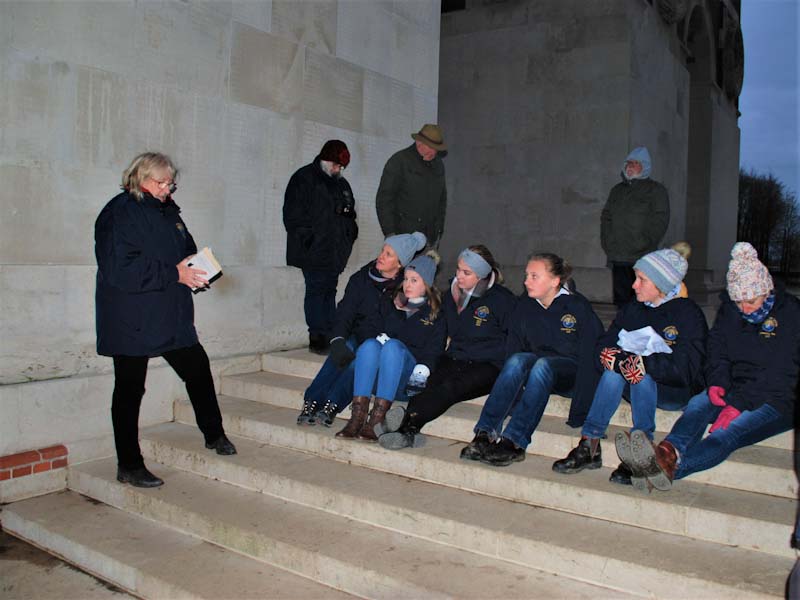December 6
Day 10 Somme
The first day of battlefields tours as we are joined by our guide, Rod Bedford. We left Amiens and travel along the Ancre River to Heilly Station Cemetery where Jo commemorates two soldiers, relatives of colleagues that she has worked with in the past. Not only was it a coincidence that they were buried in the same cemetery but were actually in the same row.
We then went to Fricourt where Jo’s grandfather is buried. One of the many casualties of the 1st day of the Battle of the Somme, his son, Jo’s father, was just 2 years old when he lost his father. Jo remembers her dad missing his father in his life. When Jo first visited this grave she left some of her father’s ashes so that they could be together finally.
Our next visit was to the crater at Lochnagar. This was one of 19 mines exploded by the British under the German Front Lines on the 1st July 1916 at the opening of the Battle of the Somme. The engineers who dug the mine ensured that there was enough explosive to create a lip around the crater to protect soldiers as they attacked from German Machine Gun fire from nearby la Boiselle. A pilot flying over Albert at the time recalled seeing a column of earth rising up into the air to about 4000ft, causing his plane to be tossed about by the concussion wave in the air, even though he was about 4kms away from the mine. While most of the other craters had been filled in by farmers, this one remained much as it was after the war. The land was bought by an Englishman named Richard Dunning in 1978, ensuring that it could be maintained as a memorial to those who lost their lives that day.
The weather was starting to turn bitterly cold so it was a welcome relief when we headed to Rod and his wife, Jackie’s, house for lunch. Warm soup and fresh bread filled a hole and warmed the cockles of our hearts at the same time.
Then back out to the battlefields. A stop off at Mouquet Farm, which was the scene of intense fighting in August 1916, which claimed the lives of many Australians, including many from SA in the 50th Battalion. These include Ngarrindjeri soldier, Arthur Walker from Goolwa and William Goldfinch from Meningie.
From there we travelled to Pozieres, which with Mouquet Farm, was described by Charles Bean as “more densely sown with Australian sacrifice than any other place on earth”. We saw the “Gibraltar Blockhouse” which was captured by the Australian 1st Brigade on the 235rd July 1916, the first day of the battle. Despite much of the structure being destroyed it is still possible to see the bullet graze marks left by Australian soldiers as the attempted to clear the German soldiers from this strong hold. Across the road is the Australian 1st Division Memorial, constructed in 1919 by Australian soldiers as they waited for transport home. Near the memorial is a viewing platform with information panels outlining different aspects of the battle and other points of interest. Beyond the memorial is the Pozieres Memorial Park. The land that this sits on was purchased with money raised to increase the memorial presence in this area. It includes a memorial to animals killed in war and will eventually have the outline of a Rising Sun badge.
Our last point of interest for the day was the Thiepval Memorial to the Missing. This is not far from Pozieres and stands out from the surrounding landscape for miles around. This memorial commemorates over 70,000 man from the British and South African armies who died in the Somme region but who have no known grave. This is only one of a number of such memorials and seeing the names that cover the surfaces of this massive memorial brings in to stark reality the massive loss of life during the war. This memorial is mentioned in the novel “Birdsong” and as the group sat under the red brick arches, Julie read a section that deals with one of the main characters first coming across it as she drove through the French countryside.
We then returned to Amiens for a look at the light show that illuminates the front of the cathedral at this time of year, but unfortunately the weather beat us and we made a hasty retreat to a local restaurant for a hearty meal to re-invigorate ourselves.
